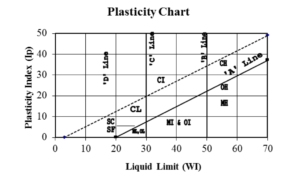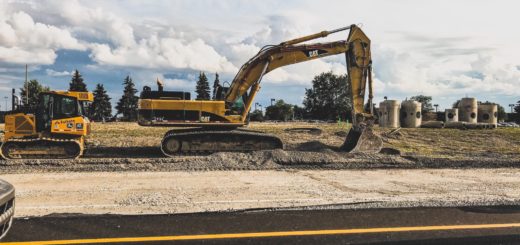Describing Different Types of Soil
In this article I will explain the differences between each soil type and how they are classified in the Modified Unified Soil Classification System.
Types of Soil
According to the Modified Unified Soil Classification System (MUSCS) there are three major classes of soil: Fine grained soils (silt and clay), coarse grained soils (gravel and sand), and highly organic soil (peat). While a geologist would classify soils based on their grain sizes, an engineer classifies soils based on engineering properties such as their plasticity or grain size distribution.
1. Coarse Grained Soils
The two sub-classes of the coarse grained soil class are sands and gravels. Sands and gravels are gritty when rubbed between the fingers or hands, and their individual particles are visible to the naked eye. The differentiation between sands and gravels depend on the grain size distribution of a sample of the material. Materials with at least 50% of particles exceeding 4.75 mm in diameter are classified as gravel, while materials with less than 50% of particles smaller than 4.75 mm in diameter are classified as sand.
Gravels are then further sub-classified as either clean gravels (containing little to no fines) or gravel with fines.
Clean gravels are then split into two more sub-classes: Well-graded gravels and poorly graded gravels. The engineering differentiation between well graded gravels and poorly graded gravels are based on the Coefficient of Uniformity (Cu) of the material and the Coefficient of Curvature (Cc) of the material. A well graded gravel is defined as a material with a Cu value greater than 4 and a Cc value between 1 and 3. A material not meeting the above criteria is therefor classified as a poorly graded gravel. The calculation of Cu and Cc are basic and can be found here.
Gravels with fines are also further split into two sub-classes: Silty gravels and clayey gravels. Both sub-classes must have a fines content greater than 12% to be classified as such. The differentiation between these two sub-classes comes from the Atterberg Limits Test, which cannot be performed in the field. A material with an Atterberg Limit line below the “A” line in the image below, and a Plastic Limit of less than 4 is classified as a silty gravel while a material with an Atterberg Limit line above the “A” line and a Plastic Limit of greater than 7 is classified as a clayey gravel.

Sands are also sub-classified into clean sands and sands containing fines.
Clean sands are also split into two more sub-classes: Well graded sands and poorly graded sands. A well graded sand is defined by having a Cu value above 6 and a Cc value between 1 and 3. If the material does not meet this criteria, it is classified as a poorly graded sand. Sands with fines are broken into two sub-classes: Silty sand and clayey sand, both materials require at least 12% fines to be classified as such. The same criteria used to differentiate between silty gravel and clayey gravel classifications are used here.
2. Fine Grained Soils
Fine grained soils are split into three sub-classes: clays, silts, and organic silts/clays. The differences between a silt and a clay in the MUSCS comes down to the Atterberg Limits line and its position on the plasticity chart (above). A material with its Atterberg Limits line above the “A” line is a clay, and a material with its Atterberg Limits line below the “A” line is a silt. Once a material has been classified as a silt or a clay using the Atterberg Limits line and plasticity chart, it can then be classified as low or high (or medium, if the material is a clay) based on the materials liquid limit. In the case of silt, a liquid limit below 50 is a low plastic silt, and a liquid limit about 50 is a high plastic silt. A low plastic clay has a liquid limit below 30, a medium plastic clay has a liquid limit between 30 and 50, and a high plastic clay has a liquid limit above 50.
3. Highly Organic Soils
Highly organic soils are usually black, have a strong odor and can be fibrous. Look for rootlets, dark color and smell the soil if you suspect that it is organic. Organic soils are generally not suitable for construction.


